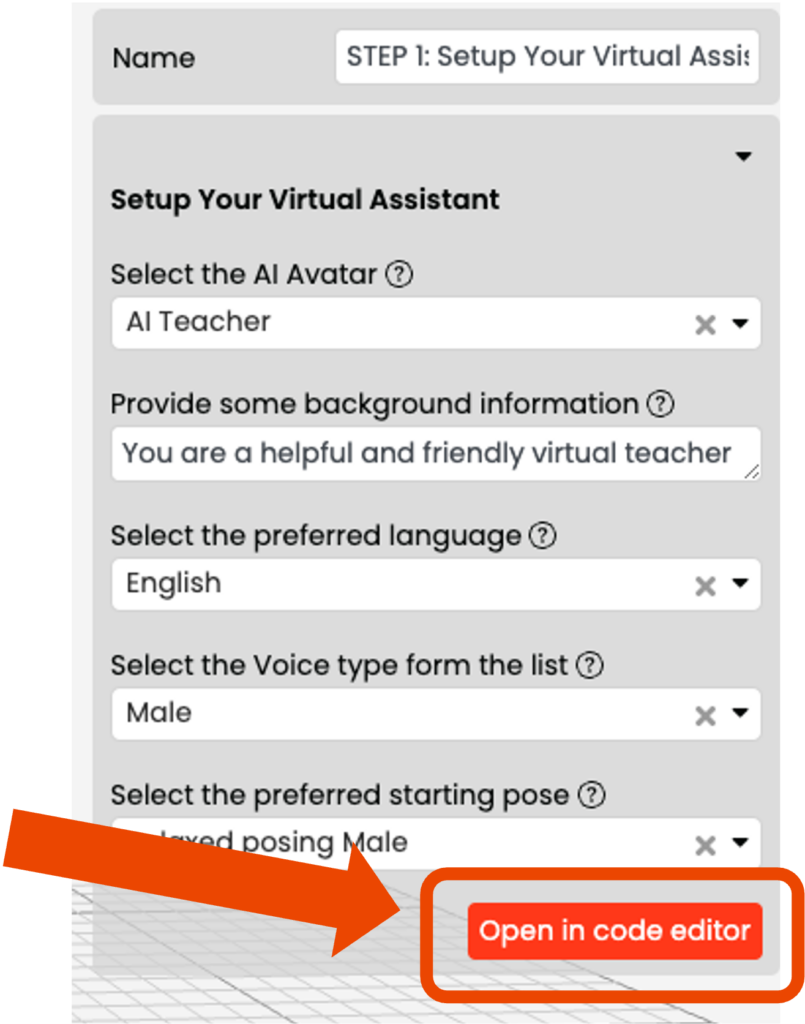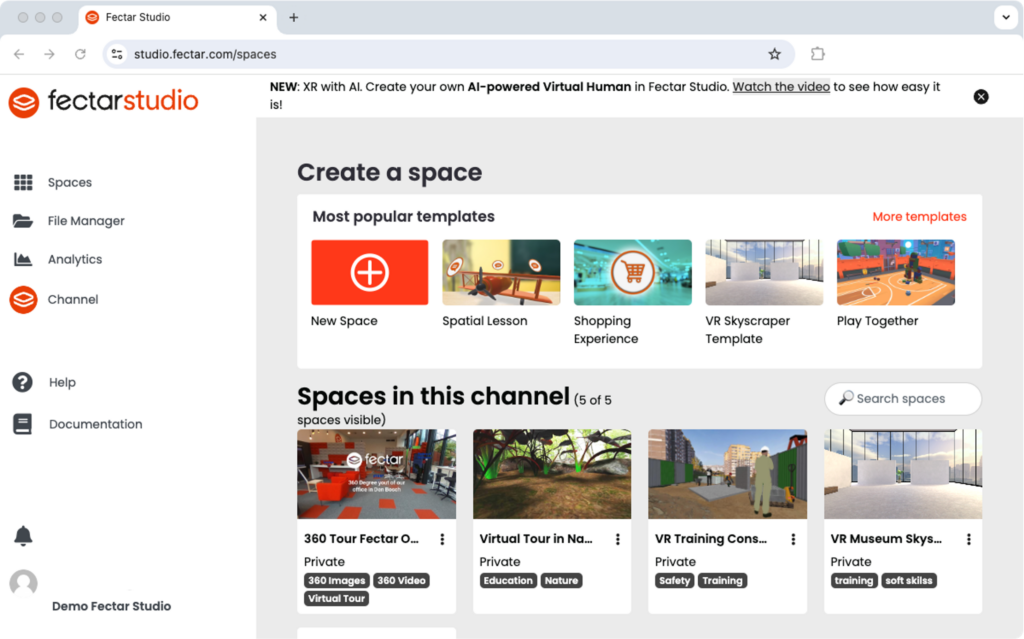No-Code, Low-Code and Code XR Development with one Platform
The Fectar Spatial Engine is the core of our XR platform, empowering you to build amazing immersive VR and AR experiences. Whether you’re a beginner or an experienced developer, our engine offers intuitive tools and powerful features to bring your ideas to life.
Create Without Coding Skills
With our no-code and low-code options, anyone can build interactive XR scenes. Use our visual interface or choose from a library of pre-built code snippets to customize your experience. Fectar Spatial Engine makes XR accessible to everyone.

Use Low-Code Snippets to get started
Fectar Snippets are a powerful feature within the Fectar platform designed to simplify the creation of interactive XR experiences. With Fectar Snippets, you can enhance your spaces without needing advanced programming skills. Whether you’re new to XR development or a seasoned creator, Snippets make it easy to add complex interactions and behaviors to your projects.
Fectar Snippets are pre-built code blocks within our interaction module that allow you to add dynamic functionality to your XR spaces with just a few clicks. They provide a simple yet powerful way to implement interactions like if-else statements, delays, on-click events, and more—all without requiring knowledge of Unity or JavaScript.
Learn more about Low-Code Snippets
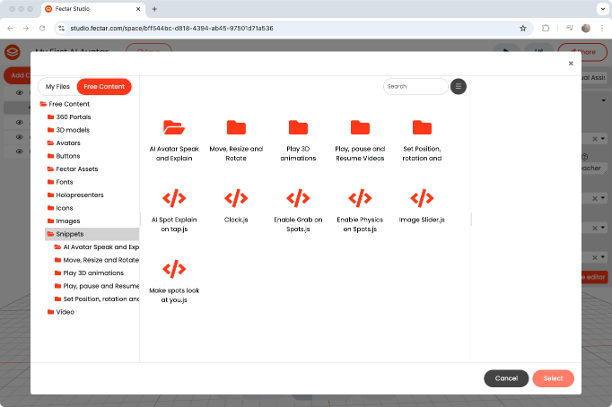
Advanced Developer Tools
Professional-Grade XR Development
For seasoned developers, Fectar Spatial Engine offers robust tools like vector handling, quaternion-based rotations, and a powerful particle system. Create complex, responsive environments that rival those built in Unity—without needing years of experience.
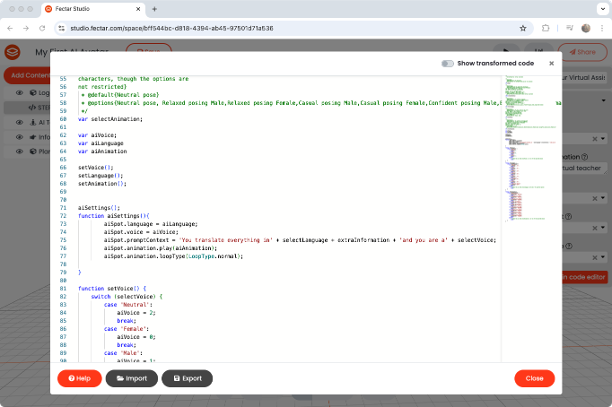
Dynamic Particle System
Add Stunning Visual Effects
Easily incorporate fire, smoke, snow, and more into your XR scenes with Fectar’s integrated particle system. Create captivating experiences with just a few clicks, or dive into the code for advanced customization.
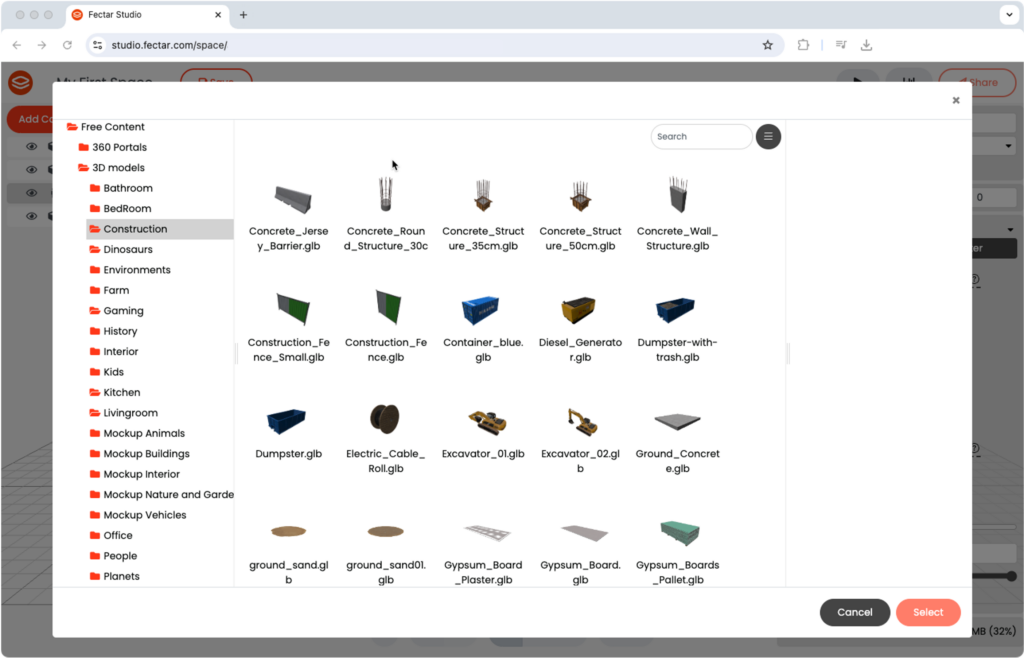
Extensive Documentation and Learning Resources
Learn and Grow with Fectar
Access comprehensive documentation covering every aspect of the Fectar Spatial Engine. Our detailed guides and code snippets help you understand and utilize all features, whether you’re starting out or deepening your expertise.
Learn more about the documentation
Cross-Platform Compatibility
Deploy Across Multiple Devices
Build XR experiences that run smoothly on any device, from high-end VR headsets to mobile phones. Fectar Spatial Engine ensures your content reaches the widest audience possible with optimal performance.
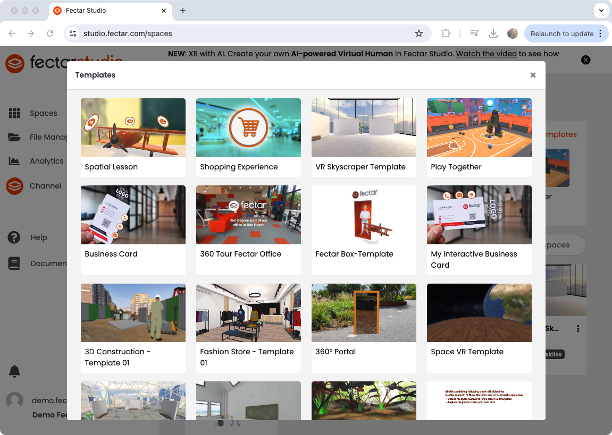
Technical Description of the Fectar Spatial Engine
The Fectar Spatial Engine employs a JavaScript-based scripting language for developing interactive XR experiences. This language is designed to be familiar to developers who have experience with modern web technologies and game development platforms like Unity. Below are some key aspects of the language and coding environment:
1. JavaScript-Like Syntax
- The scripting language in the Fectar Spatial Engine is JavaScript, featuring similar syntax and constructs such as variables, functions, and object-oriented programming (OOP) concepts. Developers who are familiar with JavaScript will find the transition to coding within the Fectar Spatial Engine straightforward.
2. Object-Oriented Programming (OOP)
- The engine supports OOP principles, allowing developers to create and manage objects, define classes, and utilize inheritance. This is crucial for creating modular and reusable code in complex XR environments.
3. Modules and Classes
- The engine is organized into various modules, each containing classes and methods that are specific to different functionalities, such as animation, interaction, events, and particle systems. For example:
- Core Module: Includes fundamental classes like
Vector3,Vector4, andQuaternionfor handling 3D vectors, 4D vectors, and rotations. - Interaction Module: Contains classes that manage user interactions within the XR environment.
- Event Module: Handles event-driven programming, such as responding to user inputs or collisions.
- Animation Module: Manages object animations, allowing for dynamic and interactive scenes.
- Core Module: Includes fundamental classes like
4. Functional Programming Support
- In addition to OOP, the engine also supports functional programming paradigms, allowing developers to write more declarative and concise code. Functions can be passed as arguments, returned from other functions, and assigned to variables, similar to JavaScript.
5. Extensibility and Customization
- Developers can extend the existing classes or create new ones to introduce custom behaviors and interactions within the XR scenes. The engine allows for deep customization through its API, providing the flexibility needed for advanced development.
6. Event-Driven Architecture
- The Fectar Spatial Engine uses an event-driven architecture, where events such as user interactions, collisions, and animations can trigger specific functions. This allows for responsive and interactive XR experiences that react in real-time to user inputs.
7. Integrated Particle System
- The engine includes a built-in particle system that can be controlled and customized through the scripting language. Developers can create complex visual effects such as fire, smoke, and snow, and manage them programmatically.
8. Learning and Development Tools
- The engine comes with a library of code snippets that developers can use as starting points for their projects. These snippets not only provide ready-made functionality but also serve as learning tools, allowing developers to see how specific features are implemented and modify them according to their needs.
